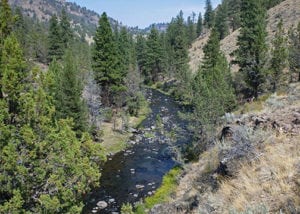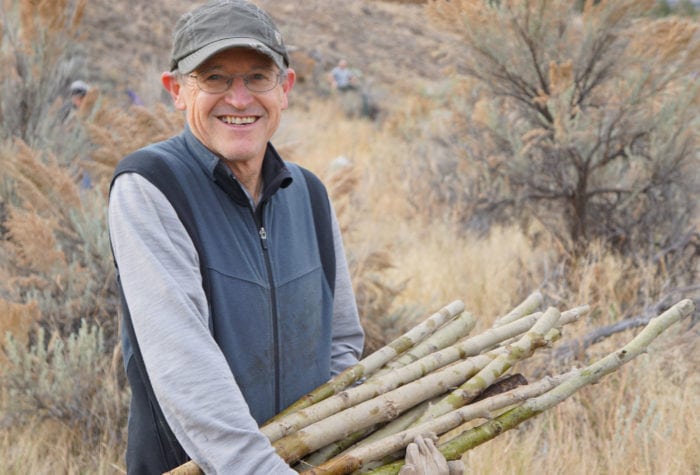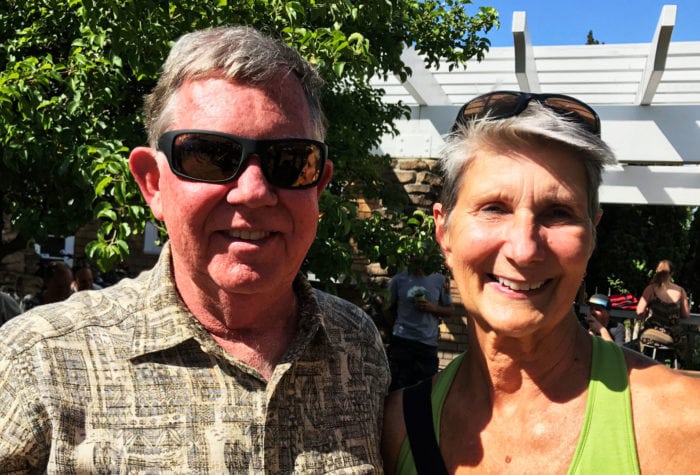In 2021, ONDA launched the Hillis Internship, a paid internship program that offers young people a more equitable pathway to become our next conservation leaders. Lily Pifferini-Carter started in October and is wrapping up her internship at the end of December. We asked her to answer a few questions before she headed off to her next opportunity.
Tell us a bit about your background and your interest in Oregon’s desert.
I grew up in Bend, Oregon, with its incredible proximity and access to natural places. It is an absolute joy and a privilege I am more aware of and thankful for all the time. My early memories are filled with beams of light coming through trees, fields of wildflowers, the smell of snowbrush, pine needles underfoot, and the cool feeling of my hand dipping into a mountain stream. The landscapes of Central Oregon painted me, and influenced how I came to perceive the world, as well as my place in it.
When I took an environmental science class at Bend High, I was astounded by how much of the class material — things like food webs and population dynamics — seemed inherent in my understanding of the world and I knew that the pursuit to know more about the natural world was something I could dedicate myself to.
With the urge to experience something completely different from what I had grown up around, I attended Franklin University Switzerland, where I studied for a bachelor’s in environmental science.
Studying abroad, I encountered new people, perspectives, cultures, landscapes, and wildlife and I was able to see things in a way that highlighted ecological interconnectedness. Since graduating, my main area of interest is ecology, and I see it as a pursuit to understand the complexity and diversity of earth’s systems. Participating in discussions about the environmental sciences with people of all different backgrounds and identities has also highlighted for me not only the value, but the urgent need to cultivate equity, access, and intersectionality to conservation in general. If we are to understand and solve these complex environmental issues, especially in a changing world, it only makes sense that we approach it with a matching breadth of diversity and range of personal experiences.
What made you want to apply for an internship at ONDA?
Growing up in the region, I saw that ONDA was always present in discussions about conservation issues as a voice for our high desert. It is also committed to acknowledging that this land, for many of us, was not originally ours. I have always wanted to contribute to a community organization that protects and restores the public lands I have spent so much of my life enjoying. I knew this internship was special because it involved compiling and processing data from ONDA’s independent stewards program. Community-driven science is a critical step in encouraging people to care for the land. It allows people to simultaneously work to protect a landscape, while also falling in love with it. ONDA’s ability to foster this connection is the foundation of all its other important work.
 What project did you work on and how did it fit into ONDA’s work?
What project did you work on and how did it fit into ONDA’s work?
My main project was to catalog photo monitoring data recorded by ONDA’s dedicated volunteers along stretches of the North Fork of the Malheur River. This Wild and Scenic River and its tributaries are designated critical habitat for bull trout, a species that is protected under the Endangered Species Act. For two decades, ONDA has been involved in legal action calling for the Forest Service to limit livestock grazing along stream banks where it impacted bull trout habitat. ONDA volunteers are now monitoring the present conditions of this riparian habitat through photos that allow us to identify any potential negative impacts to stream conditions. Using geospatial data, I mapped each of more than 430 images taken along the river and identified and highlighted photos that might show potential impacts to bull trout from grazing use, bank erosion or other factors, as well as photos that showed places where removal of livestock has allowed streams to recover. This work will support ONDA’s continued work for bull trout in this watershed.
What did the opportunity provide you in the way of learning and skill development?
As someone just coming out of college, I gained many valuable skills through this internship. I learned how to use ArcGIS mapping software, and how to prepare documents for use in complex conservation projects, which were both new for me. ONDA is a very collaborative organization, and learning how to ask questions, ask for assistance, and provide my own insight was a positive and formative experience as someone new to the workforce. As my culminating experience, I participated in several stewardship projects. I met so many amazing volunteers helping with riparian restoration. This work really put everything into perspective as to just how valuable and important stewardship is to the world of conservation.
How will you apply what you did here in the future?
I plan on bringing this opportunity, and all that I have learned, with me into my future conservation work. It truly has been a joy to participate in ONDA’s work these past few months. For me, one major takeaway has been all of the ecological knowledge I have acquired about desert ecosystems. I have also gained confidence in encountering new situations and people, and seizing opportunities. It has also been beneficial to learn about other organizations that work with ONDA to conserve land, and how partnerships can be critical to finding solutions to complex issues. Above all, I have been impressed with the notion that including as many people as possible in the practice of science allows us all to come into nature from a place of reverence and respect.

